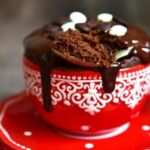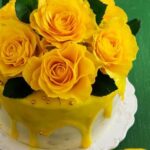Are you wondering how to decorate a birthday cake with butter icing? Decorating a cake can be just as important as baking it, as it adds that extra special touch. In this article, we will delve into the art of decorating a birthday cake with butter icing. Whether you’re a beginner or have some experience in cake decorating, using butter icing can take your creations to the next level.
A beautifully decorated birthday cake can be the centerpiece of any celebration. It’s often the first thing people notice when walking into a party and can set the tone for the entire event. Butter icing is a versatile and delicious option for decorating cakes, offering a smooth finish and the ability to create intricate designs and patterns. In this article, we will explore how to make butter icing and use it to adorn your birthday cakes in various ways.
We will cover everything from essential tools and ingredients needed for making butter icing, step-by-step instructions on preparing it, prepping the cake for decoration, basic and advanced techniques for using butter icing, adding color and additional flair to your creations, as well as troubleshooting tips for achieving professional-looking results.
Whether you’re looking to impress your friends and family with a beautifully decorated homemade cake or aspiring to become a professional baker, mastering the art of decorating with butter icing is an invaluable skill.
Ingredients and Tools Needed
When it comes to decorating a birthday cake with butter icing, the right ingredients and tools are essential for achieving the perfect look. Here is a detailed list of all the ingredients needed to make delicious and versatile butter icing. Additionally, we will outline the essential tools required for decorating the cake with butter icing.
Ingredients for Butter Icing
To make butter icing, you will need unsalted butter, confectioners’ sugar (also known as powdered sugar), pure vanilla extract, and milk or heavy cream. These are the basic ingredients for a classic buttercream frosting that can be used to decorate a variety of cakes. For chocolate butter icing, you will also need cocoa powder.
Decorating Tools
In addition to the ingredients for making the butter icing, there are several tools that are essential for decorating a birthday cake. These include offset spatulas for smoothing and spreading the icing, piping bags and tips for creating different designs and textures, a turntable for easy maneuvering while decorating, and a bench scraper for achieving clean edges on the cake.
Cake Preparation Tools
It’s also important to have basic cake preparation tools such as a serrated knife for leveling the cake layers, cake boards or stands for assembling and displaying the cake, and an angled spatula for applying crumb coat before decorating with butter icing.
By ensuring that you have all of these ingredients and tools on hand, you’ll be well-equipped to create a beautifully decorated birthday cake using delicious butter icing.
Preparing the Butter Icing
To make the perfect butter icing for decorating a birthday cake, it’s essential to follow a precise and carefully crafted recipe. Start by gathering all the necessary ingredients: unsalted butter, powdered sugar, vanilla extract, and a pinch of salt. It’s important to use high-quality ingredients for the best flavor and texture. Additionally, ensure that the butter is at room temperature before beginning the process to achieve the right consistency.
Once you have all your ingredients ready, begin by creaming the softened butter in a mixing bowl until it becomes light and fluffy. This step is crucial for achieving a smooth and creamy texture in your butter icing. Gradually add in the powdered sugar, ensuring that it is well incorporated with the butter after each addition. The salt and vanilla extract can be added at this stage as well to enhance the flavor of the icing.
To achieve the perfect consistency for decorating your cake, you may need to adjust the amount of powdered sugar or add a splash of milk if the icing is too thick or thin, respectively. Keep in mind that different decorating techniques require varying consistencies of butter icing, so be prepared to make adjustments as needed. Once you have achieved the desired texture, your butter icing is ready to be used for decorating your birthday cake.
Preparing the Cake for Decorating
Before you can begin decorating your birthday cake with butter icing, it’s essential to properly prepare the cake itself. This involves leveling the cake layers to ensure a flat and even surface for decorating, as well as applying a crumb coat to seal in any loose crumbs before adding the final layer of icing.
To level your cake, you will need a long serrated knife or a cake leveler. Carefully slice off any domed or uneven areas from the top of each cake layer, creating a flat surface. This step is crucial for achieving a professional-looking finished product and will make it easier to stack multiple layers evenly.
Once your cake layers are leveled and stacked, it’s time to apply a crumb coat. This thin layer of icing helps to seal in any loose crumbs and provides a smooth surface for the final layer of butter icing.
Using an offset spatula, spread a thin layer of icing over the entire cake, making sure to fill in any gaps between layers. Then, chill the cake in the refrigerator for 15-20 minutes to allow the crumb coat to set before adding the final layer of butter icing.
Properly preparing your cake for decorating not only ensures an aesthetically pleasing final result but also contributes to the overall taste and texture of the finished product. By taking the time to level your cake layers and apply a crumb coat, you will set yourself up for success when it comes time to add the butter icing decorations.
Basic Butter Icing Decoration Techniques
When it comes to decorating a birthday cake with butter icing, there are several basic techniques that can truly make your cake stand out. Whether you’re a beginner or just looking for some simple yet effective ideas, mastering these basic butter icing decoration techniques is essential for creating a beautifully decorated cake.
Piping
Piping is one of the most common and versatile techniques for decorating with butter icing. By using a piping bag fitted with various tips, you can create different shapes, patterns, and designs on your cake. From writing messages to making borders and intricate designs, piping allows for precise control over the butter icing.
Spreading
Spreading butter icing evenly across the top and sides of the cake is another basic technique that can produce lovely results. Using an offset spatula or a straight-edged knife, spread the butter icing in smooth, even layers. For a textured look, you can also create swirls or peaks by dragging the spatula through the icing.
Creating Different Textures or Patterns
Experimenting with different textures and patterns is a fun way to add visual interest to your cake. You can create textures like ruffles, waves, or basket-weave by using specific tools or techniques such as combing or ruffling the butter icing. Additionally, using stencils or textured mats can help you achieve unique patterns on the surface of your cake.
Mastering these basic butter icing decoration techniques will give you a solid foundation for creating beautifully decorated birthday cakes. With practice and creativity, you can combine these techniques to achieve stunning results that will impress both kids and adults alike at any birthday celebration.
Advanced Butter Icing Decoration Techniques
Creating intricate designs with butter icing can take your birthday cake to the next level, impressing everyone with your baking skills. Here are some advanced butter icing decoration techniques to help you create stunning and professional-looking designs:
- Flower Designs: Use a piping bag fitted with a flower-shaped tip to create beautiful buttercream flowers on top of your cake. Start by piping a small dot in the center, then pipe petals around it in a circular motion, overlapping each petal slightly for a realistic look.
- Border Designs: Add an elegant border to your cake using different piping tips to create decorative edges. You can use star-shaped tips for a textured border, or simply use a round tip to pipe small dots in a continuous line around the base and top edges of the cake.
- Writing With Butter Icing: Practice your handwriting skills by using a piping bag filled with butter icing to write personalized messages or greetings on the cake. It’s helpful to first sketch out the words lightly on the cake with a toothpick before piping over them.
These advanced techniques may require some practice and patience, but they will definitely elevate the overall look of your birthday cake. With these intricate designs, you can truly showcase your creativity and attention to detail when it comes to decorating with butter icing. Remember that practice makes perfect, so don’t be afraid to experiment and have fun with these advanced decoration techniques.
Adding Color and Flair
When it comes to adding color and flair to your butter icing, there are several options available to make your birthday cake truly stand out. One of the most common methods is by using food coloring. Gel or paste food coloring is recommended as it has a more intense color and won’t water down the icing.
Simply add a small amount at a time until you achieve the desired hue. Remember that a little goes a long way, so start with just a drop or two and gradually add more if needed.
Aside from adding color, incorporating other decorative elements such as sprinkles, edible glitter, or fondant decorations can take your cake to the next level. Edible glitter and sprinkles come in various shapes, sizes, and colors that can add texture and visual interest to your cake. Fondant decorations can be molded into intricate designs such as flowers, shapes, or even 3D figurines to complement the theme of the birthday celebration.
To incorporate these decorative elements seamlessly into your butter icing design, it’s important to consider your overall cake design and color scheme. Aim for balance and harmony when adding these elements – too much can overwhelm the design while too little may not have the impact you desire. Experiment with different combinations of colors and textures before committing to a final design to ensure that everything works together cohesively.
| Decorative Element | Usage Tips |
|---|---|
| Food Coloring | Use gel or paste food coloring for intense color without watering down the icing. |
| Sprinkles & Edible Glitter | Choose colors and shapes that complement your cake design but use sparingly for balance. |
| Fondant Decorations | Mold into intricate designs or figures but be mindful of overall design and cohesion. |
Troubleshooting and Tips
In conclusion, mastering the art of decorating a birthday cake with butter icing is not only a fun and rewarding skill but also an impressive way to add a personal touch to any celebration. By following the comprehensive guide provided in this article, anyone can learn how to create beautifully decorated cakes that are sure to impress family and friends.
From preparing the perfect butter icing to mastering both basic and advanced decorating techniques, this article has covered all the essential steps and tips for achieving professional-looking results.
It’s important to remember that practice makes perfect when it comes to cake decorating with butter icing. Don’t be discouraged if your first few attempts don’t turn out exactly as you had hoped. Keep experimenting with different techniques and decorations, and most importantly, have fun with the process. Additionally, don’t hesitate to seek inspiration from cake decorating books, online tutorials, or even professional bakers for new ideas and tips.
Lastly, it’s crucial to be patient and attentive when troubleshooting any issues that may arise during the decorating process. Whether it’s dealing with lumps in the icing, ensuring a smooth finish, or fixing mistakes in piping or writing, there are always solutions available.
By being prepared with the right tools and knowledge from this article on how to handle common problems when working with butter icing, anyone can overcome challenges and achieve stunning results when decorating their next birthday cake.
Frequently Asked Questions
How Do You Decorate a Cake With Buttercream for Beginners?
Decorating a cake with buttercream for beginners involves starting with a crumb coat to seal in the crumbs, then applying a thicker layer of buttercream for the final design. Simple techniques like using a piping bag and different tips, or even just spreading the buttercream with an offset spatula, can create beautiful designs.
Beginners can also experiment with adding color or flavor to the buttercream for more variety.
How Do You Cover a Cake With Buttercream Icing?
Covering a cake with buttercream icing requires starting with a crumb coat to ensure smooth coverage, then applying a thicker layer of buttercream to fully cover the cake. Using an offset spatula or bench scraper can help achieve a smooth and even finish.
It’s important to work quickly and efficiently to prevent the buttercream from melting due to body heat or warm room temperature.
How Do You Make Butter Icing Stick to Cake?
Making butter icing stick to a cake involves ensuring that the cake is completely cooled before applying the icing. Pressing down gently on each layer as it’s stacked can help create adhesion between the cake and icing.
It’s also helpful to use a slightly thicker consistency of icing that will hold its shape and adhere better to the surface of the cake without sliding off.

Welcome to my blog about home and family. This blog is a place where I will share my thoughts, ideas, and experiences related to these important topics. I am a stay-at-home mom with two young children. I hope you enjoy reading it! and may find some helpful tips and ideas that will make your home and family life even better!





